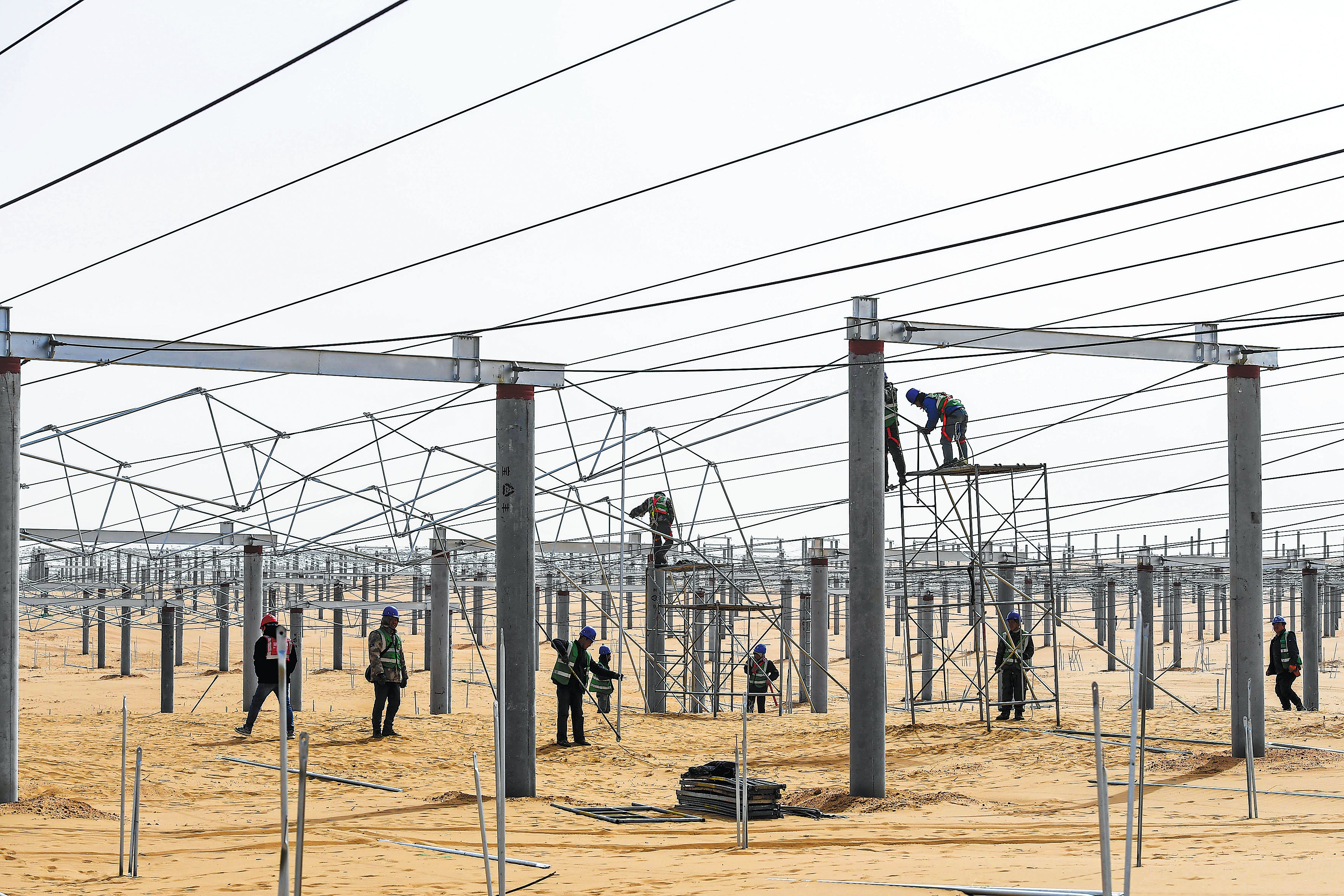China transforms extreme frontier to energy hub
THE ARTICLES ON THESE PAGES ARE PRODUCED BY CHINA DAILY, WHICH TAKES SOLE RESPONSIBILITY FOR THE CONTENTS

The Kubuqi desert, located in the Inner Mongolia autonomous region, has always been known for its severe heat and insufficient water sources.
Yet Kubuqi – China’s seventh largest desert, earlier called “the sea of death” – and the Gobi region beyond, consisting of vast expanses of rocky mountains and sand dunes, offer an exciting future.
Their large expanse of barren land rich in wind and solar resources makes it ideal for developing huge solar and wind power parks that can transform the desolate area into a bustling hub for renewable energy. And China is doing exactly that.
A mega solar and wind power base, jointly undertaken by China Three Gorges Corp and Inner Mongolia Energy Group, is currently under construction in the Kubuqi desert.
Designed with an overall installed capacity of 16 million kilowatts, the massive solar-plus-storage project will feature eight gigawatts of solar power and 4 GW of wind power upon completion, as well as four GW of upgraded coal and 300 megawatts of energy storage capacity to support steady grid operation.
Once complete, the project will be able to transfer about 40 billion kWh of electricity to the Beijing-Tianjin-Hebei region every year, half of which will be clean energy, equivalent to saving about six million metric tons of standard coal and reducing carbon dioxide emissions by about 16 million metric tons, said Chen Shicheng from China Three Gorges Corp, who is in charge of the construction site.
This is part of the country’s efforts to achieve carbon peak and carbon neutrality goals under a new development philosophy.
By 2030, China’s carbon dioxide emissions will peak, stabilise and then decline, and by 2060, China will be carbon neutral and will have a fully established green, low-carbon and circular economy.
China aims to gradually increase the share of consumption of non-fossil energy to around 20 per cent by 2025, around 25 per cent by 2030, and more than 80 per cent by 2060.
China’s fight against desertification started decades ago. In 1988, Elion Resources Group started combating desertification as part of China’s greening efforts of the vast Kubuqi desert. The country’s first solar project for sand control, with an overall planned capacity of 1,000 MW and operated by Elion, started generating power in 2016 in the Kubuqi desert.
Since then, China has continued to expand its renewable energy projects in the desert and Gobi region, with a particular focus on solar energy.

In 2021, China launched the first phase of wind and solar power projects of a total 100 gigawatts in desert areas that cover 19 provinces, according to a statement jointly released by the National Development and Reform Commission and the National Energy Administration.
As renewable energy has been gaining momentum in recent years, the government has vowed to further accelerate the construction of solar and wind power generation facilities in these areas. It has announced the second phase that will focus on related industries in the Gobi and other sandy and rocky regions.
Most of the projects will be located in the northwestern part of China that has vast renewable energy resources, including the Inner Mongolia, Ningxia Hui and Xinjiang Uygur autonomous regions, it said.
After years of efforts, the vast Gobi Desert in the northwestern part of China now boasts massive wind turbines and photovoltaic panels. Local governments are not only transforming their advantages in local resources into an economic advantage, but also ensuring sufficient power supply for the country, said Lin Boqiang, head of the China Institute for Studies in Energy Policy at Xiamen University.
“China has been stepping up efforts in greening the deserts with local governments aiming to turn their desert regions, as well as the Gobi region and the outdated and shut-down coal mining land, to solar and wind power bases, taking advantage of the abundant renewable energy resources in the area,” he said.
